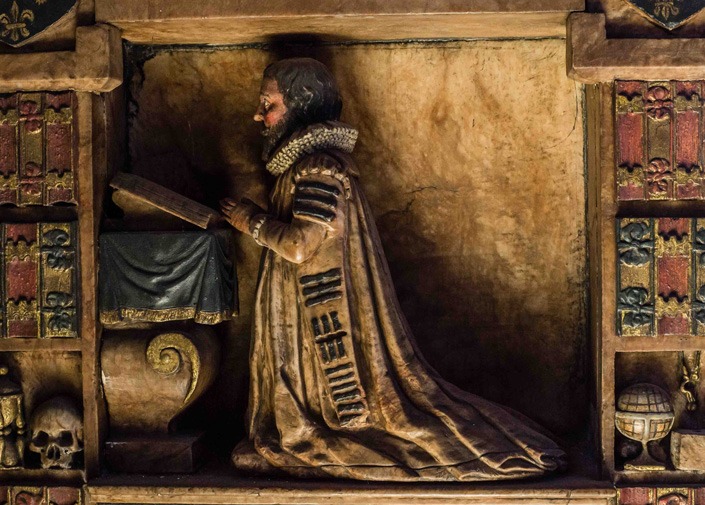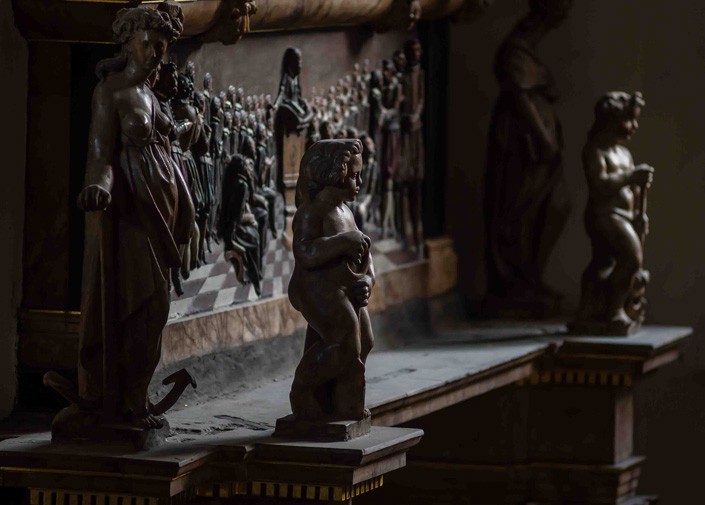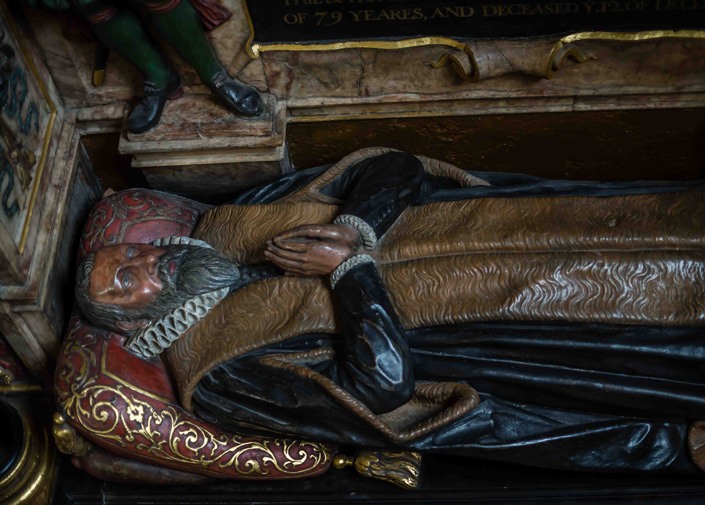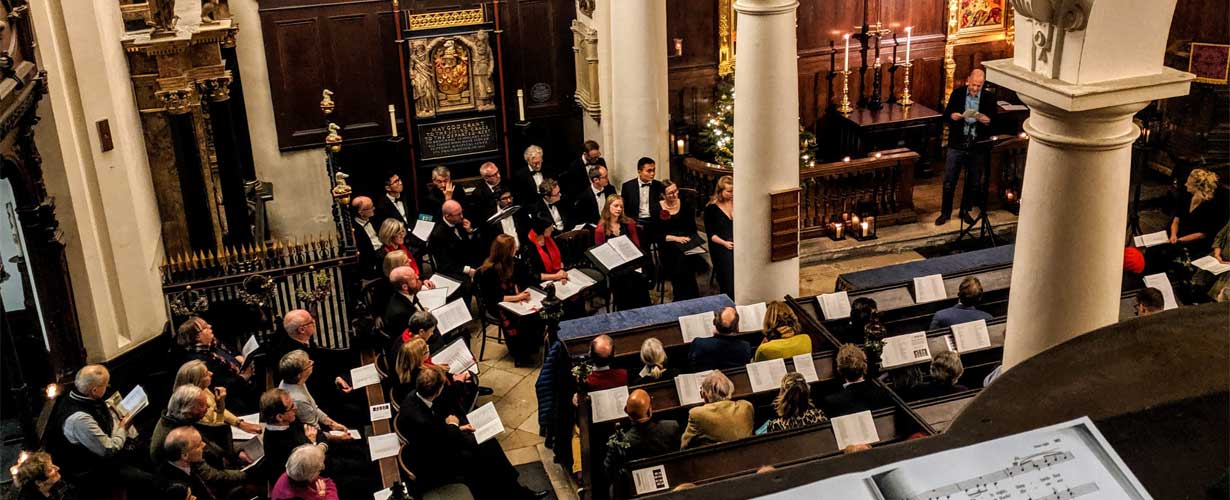Chapel
The story of the Chapel lies at the heart of that of the Charterhouse and helps tell the wider history of our nation from medieval times to the present day.
The history of the Chapel
The Chapel has evolved with the history of the Charterhouse. The first aisle leading to the altar is in the footprint of the chapterhouse of the Carthusian monastery, and would have been used for the daily business of the monastery including discussions and debates. It is where the Prior and monks would have discussed the demands for Henry VIII, and made their decision regarding whether to comply or not. The antechamber also retains glimpses of the original monastic building in the bosses and moulded stone ribs and dates to 1512, it would have been the passageway to the monastic Abbey Church that stood alongside it.
During the Protestant Reformation of Henry VIII’s reign, the Dissolution of the Monasteries saw the closure and confiscation of monastic property in England and Wales as part of the break with Rome and the Catholic Church. Prior John Houghton and 16 monks and lay monks became the first Tyburn martyr of the Reformation in 1535, and the monastery was dissolved and much of the buildings destroyed. As a result, little remains of the 15th century Carthusian Abbey other than part of the East wall.
The Charterhouse survived this turbulent period and was used to house Henry VIII’s hunting equipment, tents, and marquees before being adapted into the private Chapel for Edward North’s Tudor mansion itself built from the ruins of the monastery.
In 1614, the governors of Thomas Sutton’s charity commissioned architect Francis Carter to carry out further work on the Chapel. He designed the north aisle and the Tuscan arcade and was also responsible for the spacious cloister which joins the Chapel to the main building. This cloister is a place of burial and memorial and its windows face Chapel Court the site of the original 1349 church, which was a burial ground chapel for victims of the Black Death interred in the grounds of Charterhouse Square.
The interior of the Chapel features a Jacobean carved wood screen, pulpit, and organ gallery some of which is the work of Master Carver John James. Thomas Sutton’s memorial dominates the north aisle of the Chapel featuring work by Nicholas Stone who later became Master Mason to James I (James VI of Scotland) and Charles I.
Further adaptations to the Chapel were made to accommodate the requirements of Sutton’s charity, which made provision for the care of 80 ‘Poor Brothers’ in housing need and the education of 40 boys from impoverished backgrounds. Brothers were required to attend Chapel twice a day up until 1907, or risk being fined, and the schoolboys also attended until the school moved to Godalming in Surrey in 1872. The Chapel was extended in 1825 when a bay was added to better accommodate the schoolboys who were not foundation scholars, and they sat in the stalls adjacent to the pews in the nave where the Master could keep an eye on them from his seat in the raised stalls opposite.
When Brothers enter the Charterhouse, they are able to remain here until the end of their lives and for many years were interred in their own burial ground within the Charterhouse site. A few memorial stones still remain on the wall which borders Clerkenwell Road. From 1854, Tower Hamlets Cemetery was used instead and in 1929, the churchyard of St Mary the Virgin, Little Hallingbury in Essex became the Brothers’ burial ground. Little Hallingbury was one of the estates Thomas Sutton left in the charity’s original endowment and was where he had originally planned to set up his almshouse and school.
An annual Memorial Service for departed Brothers takes place there in July.
The present Preacher is the Reverend Canon Ann Clarke, appointed in 2020, and the first female to hold the post.
Contact: ann.clarke@thecharterhouse.org
The Chapel today
Regular services are held in the Chapel, to which visitors are very welcome, as well as baptisms, marriage blessings, and memorial services. For further information on baptisms, wedding blessings, and memorial services please contact the Preacher, and for civil marriages and wedding venues please contact Venue Hire.







